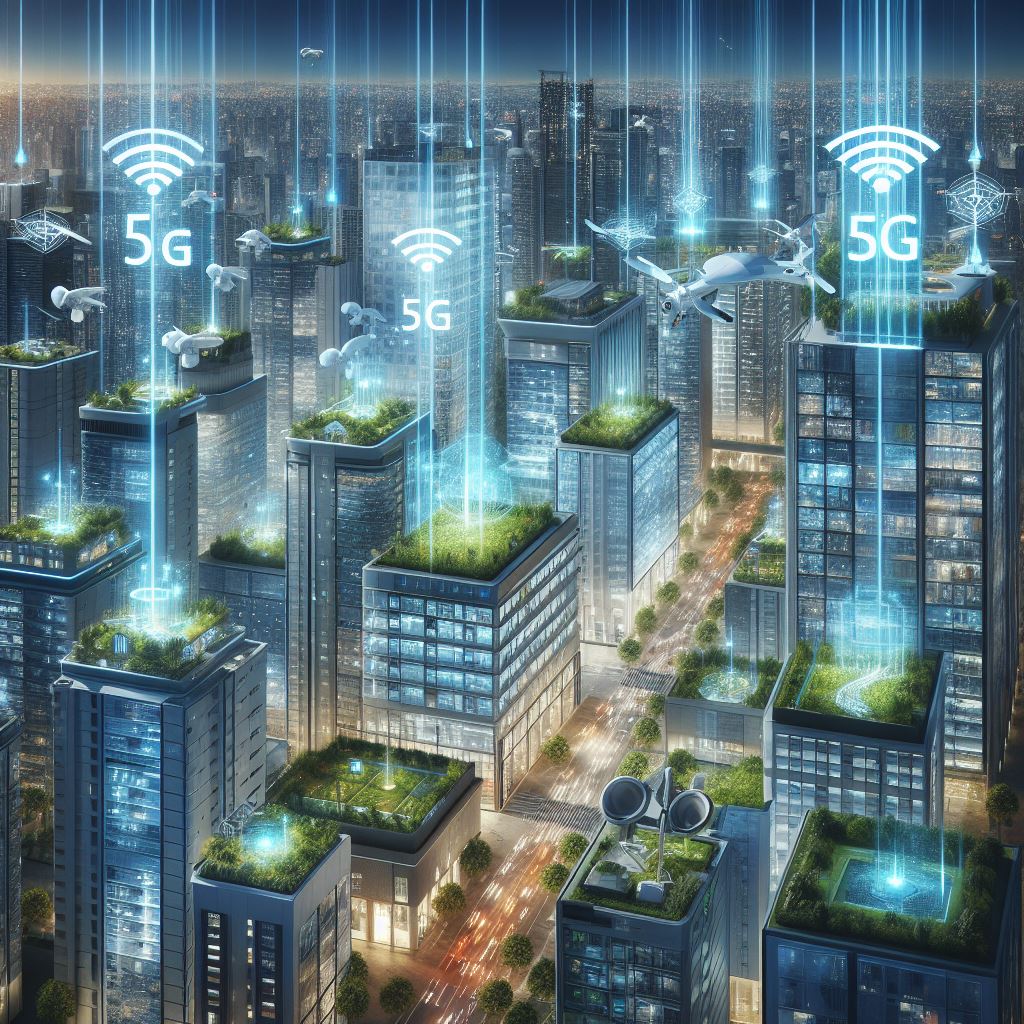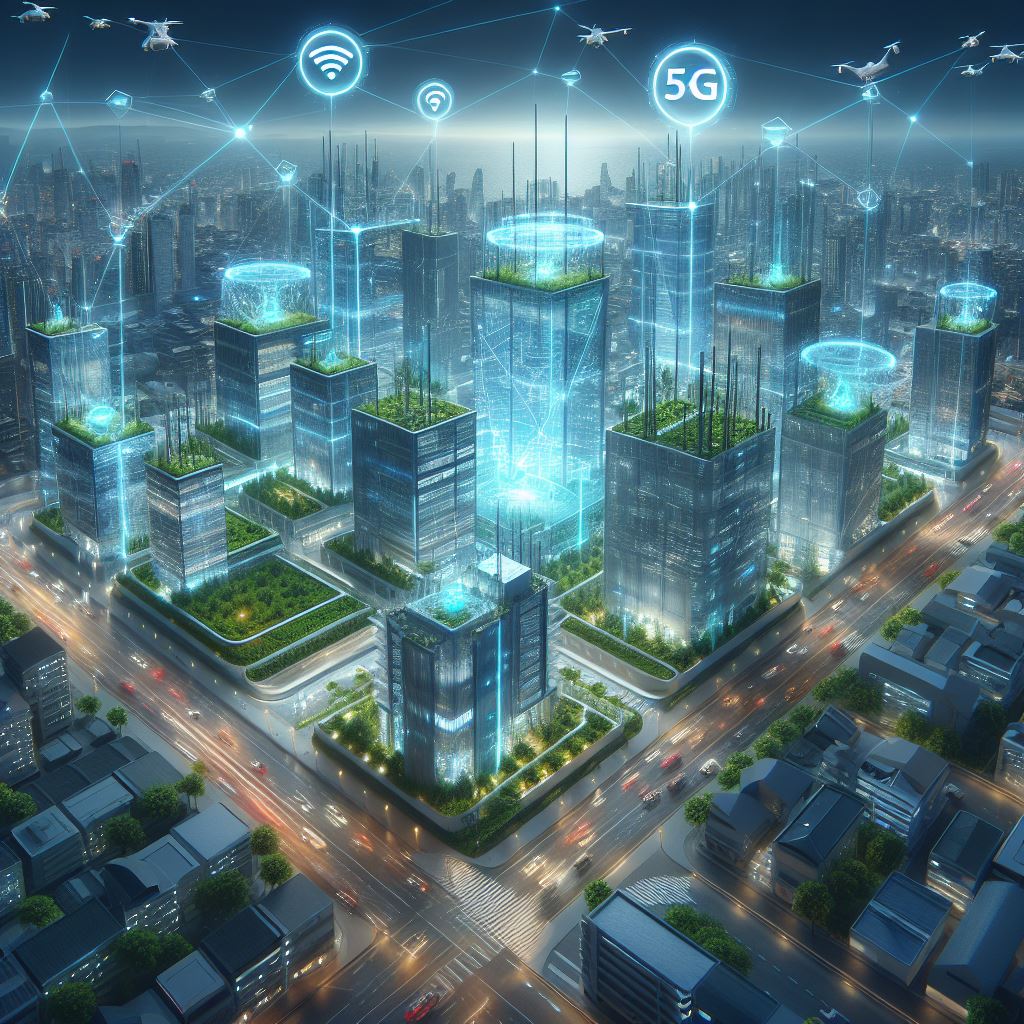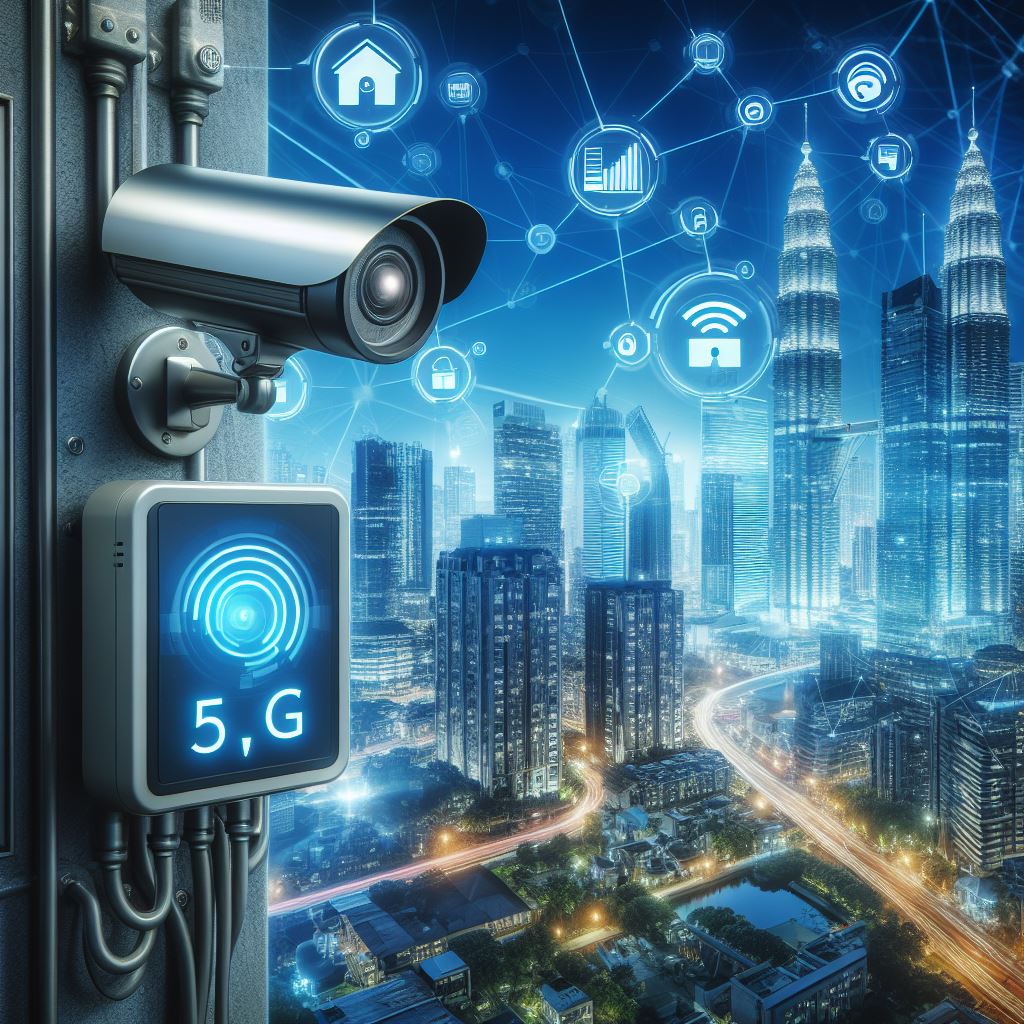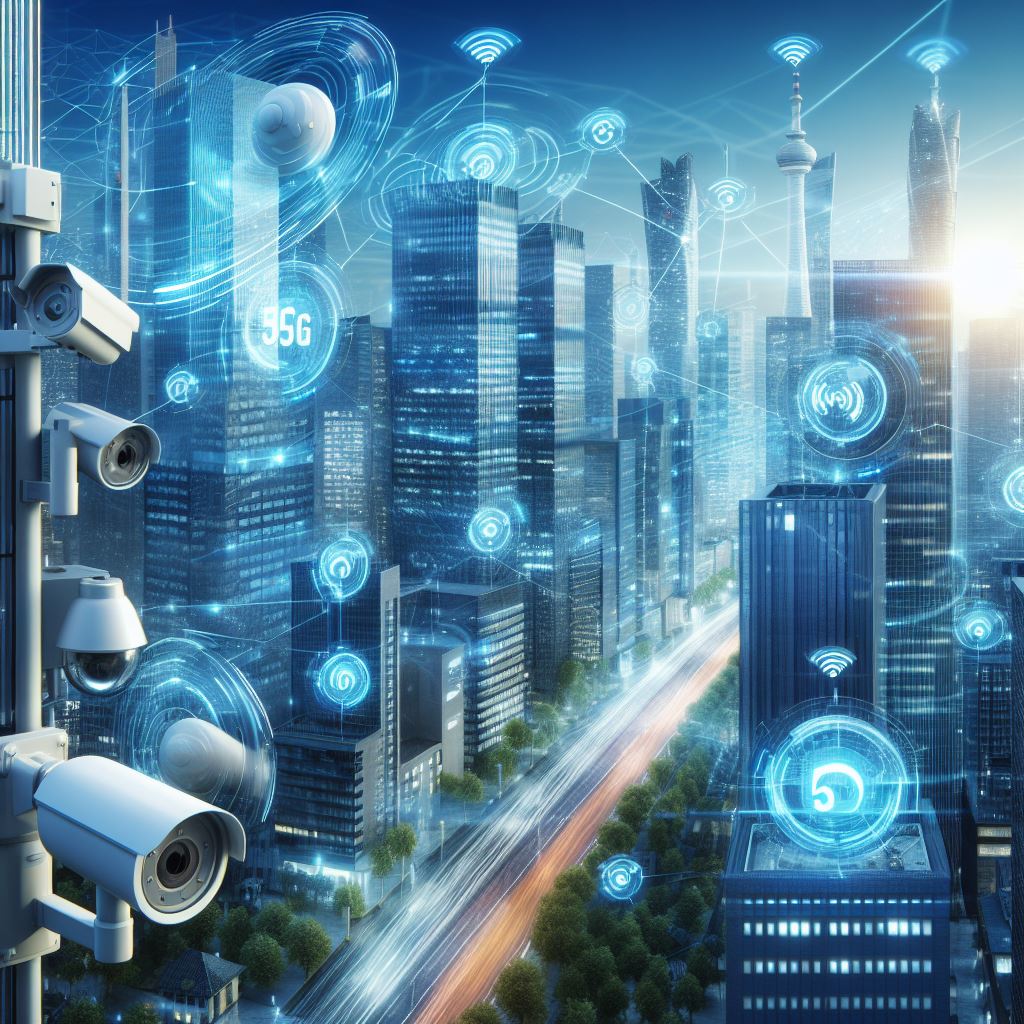What are Smart Buildings?
Smart buildings utilise advanced technology and data-driven solutions to improve efficiency, comfort, security, and sustainability. These buildings integrate various systems, such as HVAC (heating, ventilation, and air conditioning), lighting, security, and occupancy sensors, into a centralised network that can be monitored and controlled remotely.

Key features include:
- Automation and Control: use sensors and actuators to monitor and control various systems automatically. For example, they can adjust lighting and temperature based on occupancy or external conditions.
- Energy Efficiency: By optimizing energy usage through intelligent controls and predictive analytics, can reduce energy consumption and lower operating costs.
- Occupant Comfort: aim to enhance occupant comfort and productivity by providing personalized environments. This could involve adjusting lighting, temperature, and air quality based on individual preferences.
- Safety and Security: Integrated security systems, including access control, surveillance cameras, and intrusion detection, enhance safety and security within smart buildings.
- Data Analytics: collect and analyze data from various sources to identify patterns, optimize operations, and predict maintenance needs. This helps in proactive maintenance and better decision-making.
- Sustainability: By monitoring resource usage and implementing energy-efficient technologies, contribute to sustainability goals by reducing their environmental footprint.
Overall, leverage technology to create more efficient, comfortable, and sustainable environments for occupants while also optimizing operations for building owners and managers.

Why are Companies moving to Smart Buildings?
Companies are increasingly moving towards smart buildings for several reasons, driven by the desire to improve operational efficiency, reduce costs, enhance sustainability efforts, and provide better experiences for occupants. Here are some key reasons why companies are making this transition:
- Cost Savings: Smart buildings can significantly reduce operational costs through energy efficiency measures, predictive maintenance, and optimized resource utilization. By automating systems and processes, companies can lower utility bills, maintenance expenses, and overall operating costs.
- Enhanced Efficiency: Automation and centralized control systems in smart buildings streamline operations, making them more efficient and responsive. This includes automated HVAC control, lighting systems, occupancy sensors, and scheduling software, which improve resource allocation and reduce waste.
- Improved Occupant Comfort and Productivity: Smart buildings can create more comfortable and productive environments for occupants by personalizing temperature, lighting, and other environmental factors based on individual preferences. This leads to higher employee satisfaction, better health outcomes, and increased productivity.
- Sustainability and Corporate Responsibility: Adopting smart building technologies aligns with companies’ sustainability goals and demonstrates their commitment to environmental responsibility. By reducing energy consumption, carbon emissions, and resource waste, companies can enhance their corporate image and meet regulatory requirements.
- Data-Driven Decision Making: Smart buildings generate vast amounts of data about building performance, occupant behavior, and environmental conditions. By analyzing this data, companies gain valuable insights into usage patterns, operational inefficiencies, and opportunities for improvement, enabling data-driven decision-making and continuous optimization.
- Competitive Advantage: Embracing smart building technologies can provide a competitive edge in the market by differentiating companies as innovative, forward-thinking, and environmentally conscious. This can attract customers, investors, and top talent who prioritize sustainability and cutting-edge technology.
- Future-Proofing: Investing in prepares companies for future challenges and technological advancements. As the Internet of Things (IoT) and smart technologies continue to evolve, offer a scalable and adaptable infrastructure that can easily integrate new innovations and upgrades.
- Regulatory Compliance: In many regions, there are regulations and standards aimed at improving building efficiency and reducing environmental impact. Smart buildings help companies meet these requirements by automating energy management, monitoring emissions, and implementing sustainable practices.
Overall, the move towards is driven by a combination of economic, environmental, and technological factors, all aimed at creating more efficient, sustainable, and user-friendly built environments.

How do Smart Buildings affect the environment?
Smart buildings have the potential to have both positive and negative effects on the environment, depending on how they are designed, implemented, and managed. Here’s a breakdown:
Positive Effects:
- Energy Efficiency: Smart buildings can significantly reduce energy consumption through automation and optimization of HVAC, lighting, and other systems. This leads to lower greenhouse gas emissions and reduces the overall environmental footprint of the building.
- Resource Conservation: By monitoring water usage, waste generation, and other resource flows, smart buildings can promote conservation efforts. For example, water-efficient fixtures and smart irrigation systems can reduce water consumption.
- Sustainable Materials: Some smart buildings incorporate sustainable building materials and construction practices, further reducing their environmental impact over their lifecycle.
- Renewable Energy Integration: Smart buildings often integrate renewable energy sources such as solar panels or wind turbines. This reduces reliance on fossil fuels and contributes to the adoption of clean energy.
- Data-Driven Optimization: Through data analytics, smart buildings can identify areas for improvement and optimize operations for maximum efficiency, leading to further energy and resource savings.
Negative Effects:
- Electronic Waste: The deployment of numerous sensors, controllers, and other electronic components in smart buildings can contribute to electronic waste if not properly managed at the end of their lifecycle.
- Complexity and Maintenance: The sophisticated technology infrastructure of smart buildings may require specialized skills for maintenance and repair. If not managed efficiently, this complexity could lead to increased energy consumption or resource waste.
- Privacy Concerns: Smart buildings collect vast amounts of data about occupants’ behaviors and preferences. If not handled carefully, this data collection could raise privacy concerns and ethical considerations.
- Initial Environmental Impact: The production and installation of smart building technologies, including sensors, networks, and automation systems, may have an initial environmental impact due to manufacturing processes and transportation.
Overall, the environmental impact of smart buildings depends on various factors, including design, technology choices, operational practices, and maintenance strategies. When implemented thoughtfully and with a focus on sustainability, smart buildings can significantly reduce their environmental footprint and contribute to a more sustainable future.

What connectivity are Smart Buildings using?
Smart buildings utilise a variety of connectivity options to enable communication between devices, systems, and users within the building. The choice of connectivity depends on factors such as bandwidth requirements, coverage area, latency sensitivity, and cost considerations. Here are some standard connectivity options used in smart buildings:
- Wi-Fi: Wi-Fi is a ubiquitous wireless technology that provides high-speed internet connectivity within buildings. It is commonly used for connecting laptops, smartphones, tablets, and other Wi-Fi-enabled devices to the building network. Wi-Fi can also support IoT devices with the use of Wi-Fi modules or gateways.
- Ethernet: Ethernet cables are used to establish wired connections between devices and network infrastructure within the building. Ethernet provides reliable, high-speed connectivity and is commonly used for connecting stationary devices such as desktop computers, servers, printers, and IP cameras.
- Bluetooth: Bluetooth technology is used for short-range wireless communication between devices within the building. It is commonly used for connecting peripherals such as keyboards, mice, speakers, and smart home devices. Bluetooth Low Energy (BLE) is also used for IoT applications that require low power consumption and long battery life.
- Zigbee: Zigbee is a low-power, low-data-rate wireless communication protocol commonly used for IoT devices within smart buildings. Zigbee operates on the 2.4 GHz frequency band and is designed for applications such as home automation, lighting control, and environmental monitoring.
- Z-Wave: Z-Wave is another low-power wireless communication protocol used for IoT devices in smart buildings. Z-Wave operates on the sub-GHz frequency bands and is commonly used for home automation, security systems, and energy management applications.
- LoRaWAN: LoRaWAN (Long Range Wide Area Network) is a wireless communication protocol designed for long-range, low-power IoT applications. LoRaWAN operates in the unlicensed sub-GHz frequency bands and is commonly used for applications such as smart metering, asset tracking, and environmental monitoring within smart buildings.
- Cellular (4G/5G): Cellular networks such as 4G LTE and 5G provide wide-area wireless connectivity for devices within smart buildings. Cellular connectivity is commonly used for applications such as remote monitoring, mobile workforce communication, and backup internet connectivity.
- Thread: Thread is a low-power, IPv6-based wireless communication protocol designed for IoT devices within smart buildings. Thread operates on the 2.4 GHz frequency band and is commonly used for applications such as home automation, lighting control, and HVAC systems.
Overall, smart buildings leverage a combination of wired and wireless connectivity options to enable seamless communication and integration of devices and systems, supporting various applications aimed at improving efficiency, sustainability, and user experience.
Please sign up for our weekly IoT Newsletter to have these articles direct to your inbox. Thanks for reading 😉

